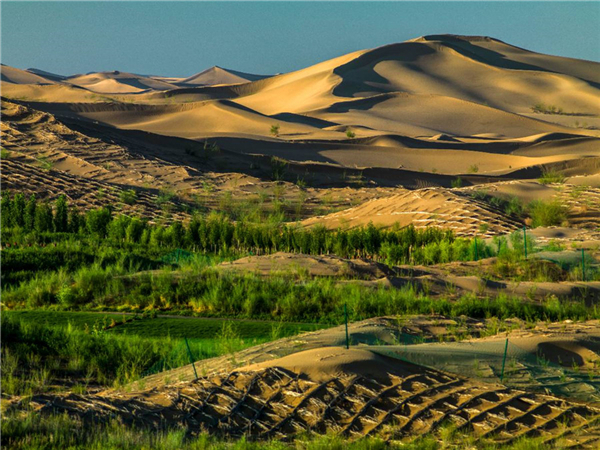Green efforts change Inner Mongolia over 40-year period

The use of sand barriers helps transform hundreds of acres in northern China's Kubuqi Desert into green landscape. [Photo provided to chinadaily.com.cn]
North China's Inner Mongolia autonomous region has planted around 2 billion trees over a 40-year period, forming a green shield in the country's northern area.
This was according to information from the region's forestry and grassland administration on March 12, which marks China's National Tree Planting Day.
Inner Mongolia spans the northeast, north and northwest regions of China. It has the Badain Jaran, Tengger, Ulan Buhe and Kubuqi deserts, as well as the five sandy lands of Maowusu, Hunshandake, Horqin, Hulunbuir and Ujumqin, which make the ecological construction there difficult.
Statistics from the Inner Mongolia authority reveal that the area of forest land in the entire region has increased from 137 million mu (9.13 million hectares) at the beginning of the funding of the autonomous region to 392 million mu, and the forest coverage rate has reached 23 percent, due to the region's greening efforts.
The area of desertified and sandy land throughout the whole region has seen a "double reduction" for the past many years.
The barren hills of Sumu Mountain in Xinghe county, Ulaanqab city have turned green, with a forest area of 202,300 mu and a forest coverage rate of 74.8 percent, making it the largest artificial forest farm in North China.
In addition, one-third of the Kubuqi Desert is now forested, becoming a model for the global fight against desertification.



 Print
Print Mail
Mail


